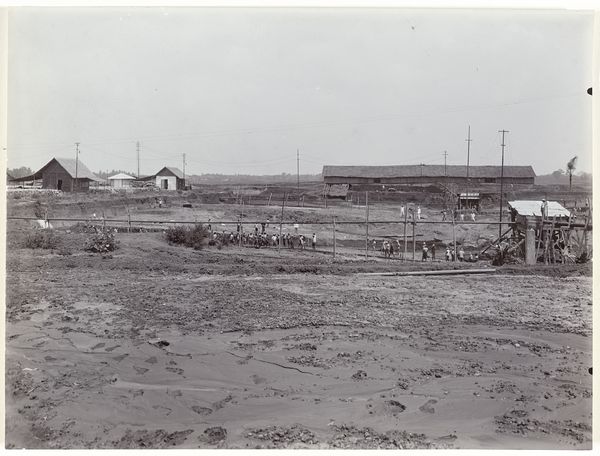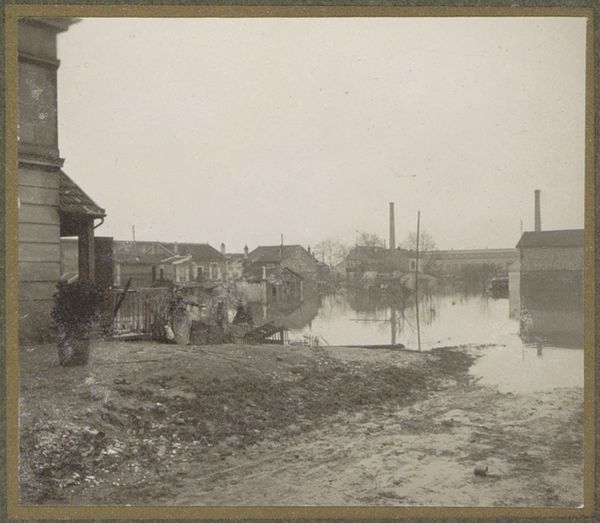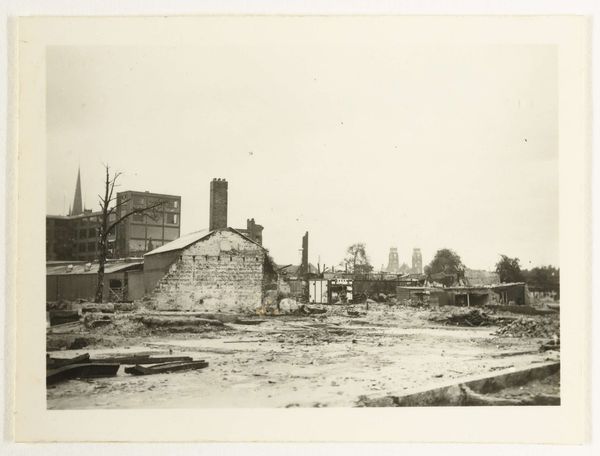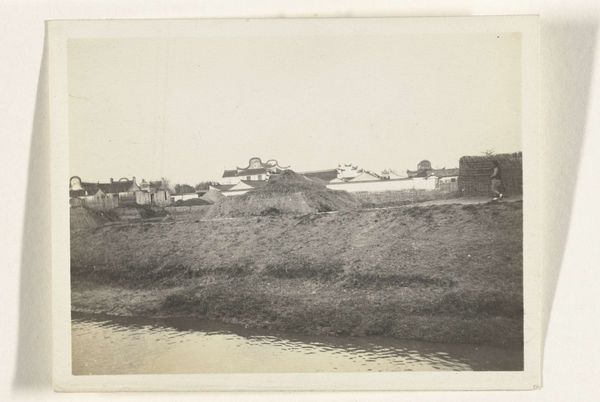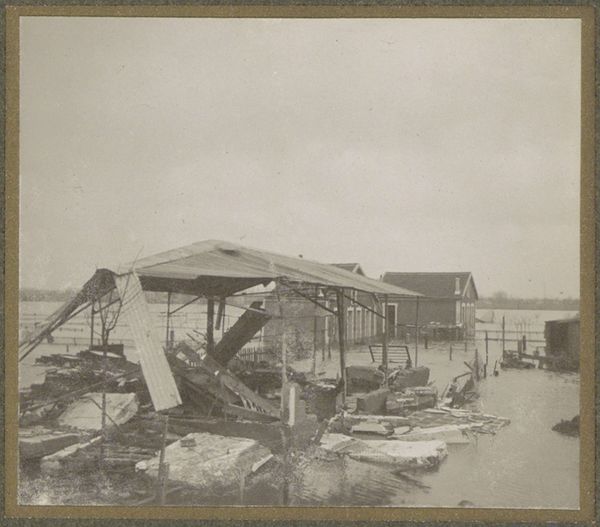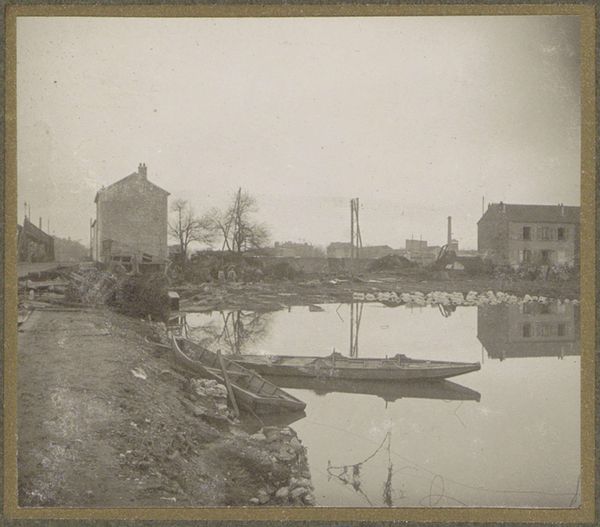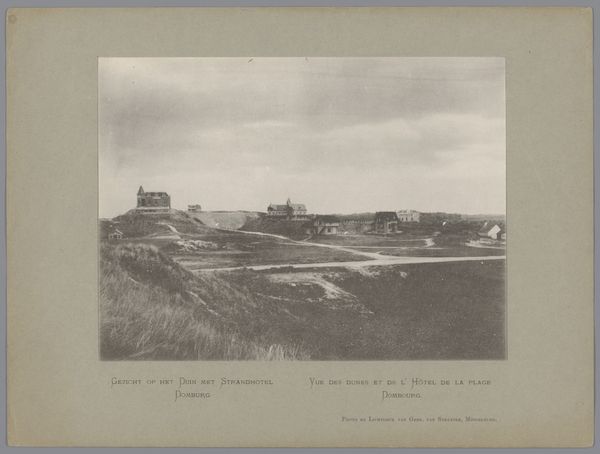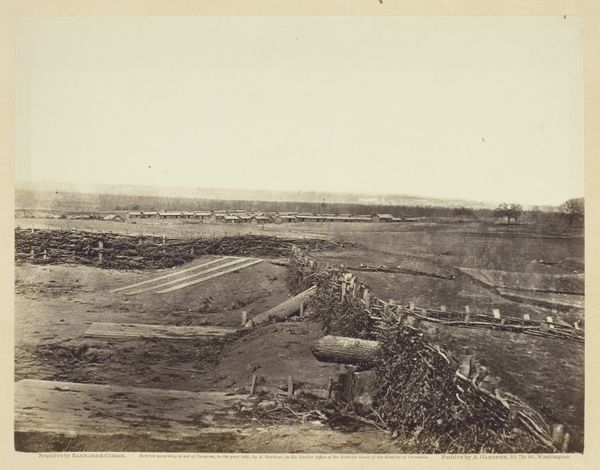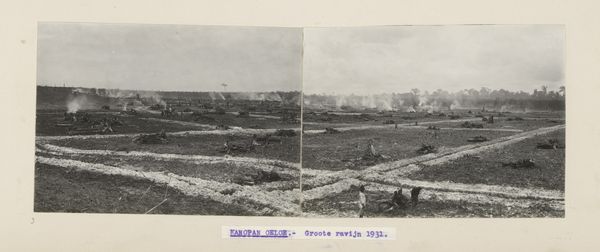
photography, albumen-print
#
landscape
#
photography
#
orientalism
#
albumen-print
#
realism
Dimensions: height 83 mm, width 171 mm
Copyright: Rijks Museum: Open Domain
Curator: Looking at this stereoscopic albumen print by Ferrier Pére-Fils et Soulier, the initial sensation is a somber one. Editor: Somber indeed. The monochromatic palette and wide, almost desolate landscape evoke a sense of industry clashing with nature. What are we looking at here? Curator: It captures the construction of the Suez Canal in Egypt between 1867 and 1869. The photographic clarity offers a surprisingly realist document, while hinting at the exotic with its suggestion of "Orientalism" for the contemporary Western viewer. Editor: Ah, yes, those giant draglines... Almost like skeletal beasts, they loom over the landscape, reflecting in the canal waters. They seem to embody the ambition and even ruthlessness of industrial progress. And that horizon, the endless sky – is it hopeful or indifferent? Curator: Precisely. Consider the symbolism—water as both a source of life and a conduit for commerce, but also representing division, the physical act of splitting land to forge a new path, one that connected Europe and Asia in an unprecedented manner. The Canal immediately shifted global trade routes and accelerated colonial enterprises. The draglines are also powerful symbols here. Editor: So, while technically a landscape photograph, it's really a political statement about humanity's power over geography. The almost ghostly quality of the print enhances that. Curator: Absolutely. This work represents more than just a construction project. It presents the complexities of modernity and empire through symbols like the draglines which stand as testaments to engineering hubris, simultaneously awe-inspiring and a bit menacing. Editor: I find that complexity really engaging. It resists a straightforward celebration of progress, inviting us to ponder the social and environmental costs lurking beneath the surface. Curator: Ultimately, this photograph challenges viewers to critically assess how such infrastructural projects have reshaped our world—not only geographically but culturally and politically as well. Editor: It's a striking reminder that even seemingly neutral documentation can carry profound symbolic and historical weight.
Comments
No comments
Be the first to comment and join the conversation on the ultimate creative platform.

